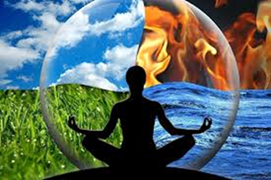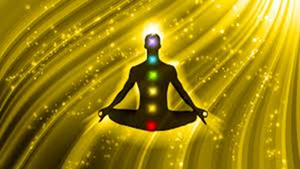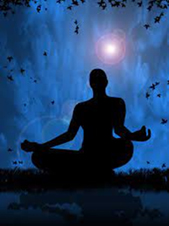(2) Raudra Dhyana – ‘Raudra’ means cruel, harsh. When the mind is either full of anger, hatred, malice, and violence or is scheming evil designs, we are passing through Raudra Dhyana. When we are in this condition, we enjoy the activities which are immoral. All mental activities to grab power and wealth, sexual enjoyment and anti-social acts fall within this classification.
(i) The first type of Raudra dhyana called ‘himsanandi’, means taking delight in killing, crushing or destroying the living beings either by self or through other. It includes skill in violent actions.
(ii) Mrsanandi Raudra dhyana includes falsehood, composing deceptive literature for one’s own pleasure, collecting wealth by deceit and deceiving the simple-minded.
(iii) Cauryanandi Raudra dhyana includes not only the act of theft but also preaching dexterity in theft.
(iv) Visayanandi Raudra dhyana includes desire to take possession of all good things of the world and thinking of fighting ferociously for attainment of the objects of enjoyment.
Both the above referred dhyanas are spiritually degrading the self. Most of us remain permanently engaged in these two Dhyanas with the result that we are not able to make any progress spiritually. Next two Dhyanas are of the superior variety and help us to progress further in our journey to freedom.
(3) Dharma Dhyana – The word ‘Dharma’ is used in Jaina terminology in a sense wider than ‘religion’. What is ‘Dharma’? Answer is ‘Vatthu Sahavo Dhammo’, i.e., the intrinsic nature of a thing is its ‘Dharma’. So long as a thing remains within the limits of its intrinsic nature, and does not transgress these limits, it remains within its own ‘Dharma’. Life’s problems arise when we transgress these limits and encroach upon the foreign fields. Working on these principles, it the ‘Jiva’, i.e., the self, forgetting its own intrinsic nature, tries to encroach upon the field of ‘Ajiva’, it invites trouble. But if it concentrates its attention on its own self, tries to analyse its nature and focuses its activities on its upliftment, it enters into the field of ‘Dharma Dhyana’. Thus, if we fix our attention and activities in studying the views expressed by enlightened souls, and try to find out how far we can put these views in actual practice, it would be a type of Dharma Dhyana which is called ‘Ajnana-vacaya’. When we contemplate how the true character of the self is clouded by its contact with kasayas such as anger, pride, etc., and how the self can be made free from this contact, we are in ‘Apayavicaya’ Dharma dhyana. When we think how the accumulated karmas can be shed, we are in the Dharma-dhyana which is called, ‘Vipaka-vicaya’. When we contemplate about the nature of this universe (Loka) and its functioning, it is called ‘Loka-samsthana-vicaya’ Dharma Dhyana.
Dharma Dhyana takes our mind away from Artta and Raudra which are degrading the spirit, and which result only in earning further karmas which bind the spirit. Dharma-dhyana not only takes us to the field of metaphysics and logic, but also constitutes the best type of Satsanga as it engages our mind in closet company with the great seers who have realized the Truth.





Thank you for your sharing. I am worried that I lack creative ideas. It is your article that makes me full of hope. Thank you. But, I have a question, can you help me?